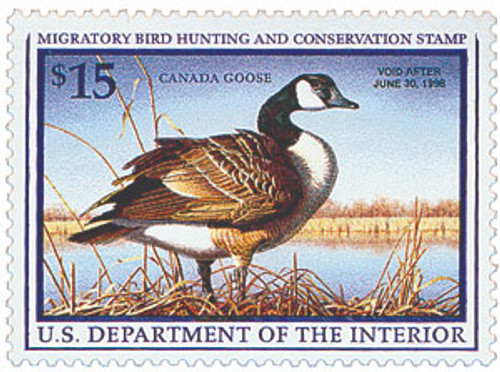
# RW69 - 2002 $15.00 Federal Duck Stamp - Black Scoter
RW#69
2002 $15 Black Scoter
Issued: July 1, 2002
Quantity: 1,619,104
Artist: Joseph Hautman
Perhaps no stamps are as beautiful or as popular as the Hunting Permit Stamps, better known as the “Duck Stamps.” In March 1934, Congress authorized the Postal Department to issue receipts, in the form of attractive stamps, to licensed hunters. The profits from these stamps would then go to maintaining waterfowl life in the United States. J.N. Darling, a well-known cartoonist and artist, designed the first “duck” stamp - a $1.00 issue that pictured two mallards preparing to land. Its beauty and novelty immediately appealed to stamp collectors, and the desire to own one became widespread.
RW#69
2002 $15 Black Scoter
Issued: July 1, 2002
Quantity: 1,619,104
Artist: Joseph Hautman
Perhaps no stamps are as beautiful or as popular as the Hunting Permit Stamps, better known as the “Duck Stamps.” In March 1934, Congress authorized the Postal Department to issue receipts, in the form of attractive stamps, to licensed hunters. The profits from these stamps would then go to maintaining waterfowl life in the United States. J.N. Darling, a well-known cartoonist and artist, designed the first “duck” stamp - a $1.00 issue that pictured two mallards preparing to land. Its beauty and novelty immediately appealed to stamp collectors, and the desire to own one became widespread.













